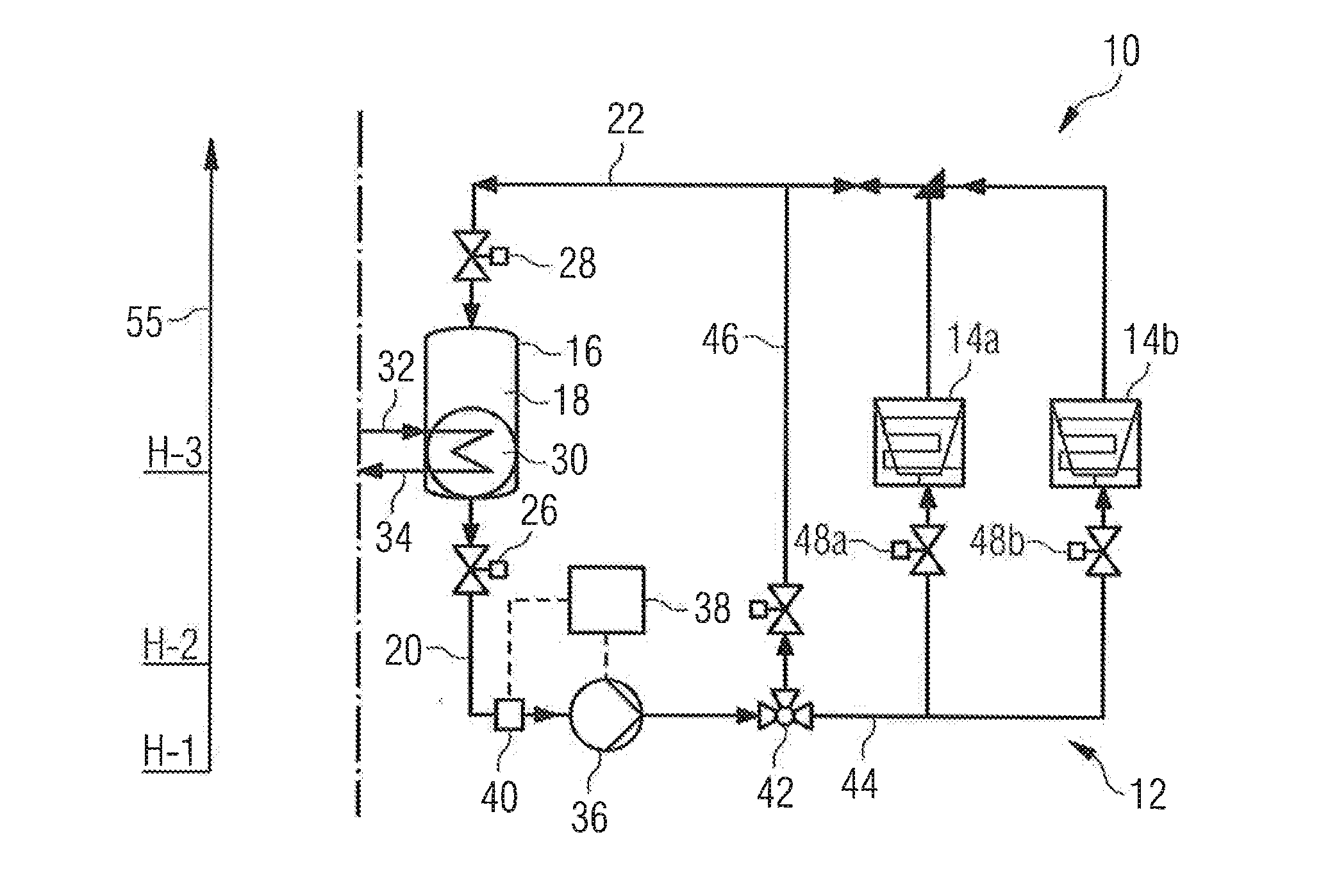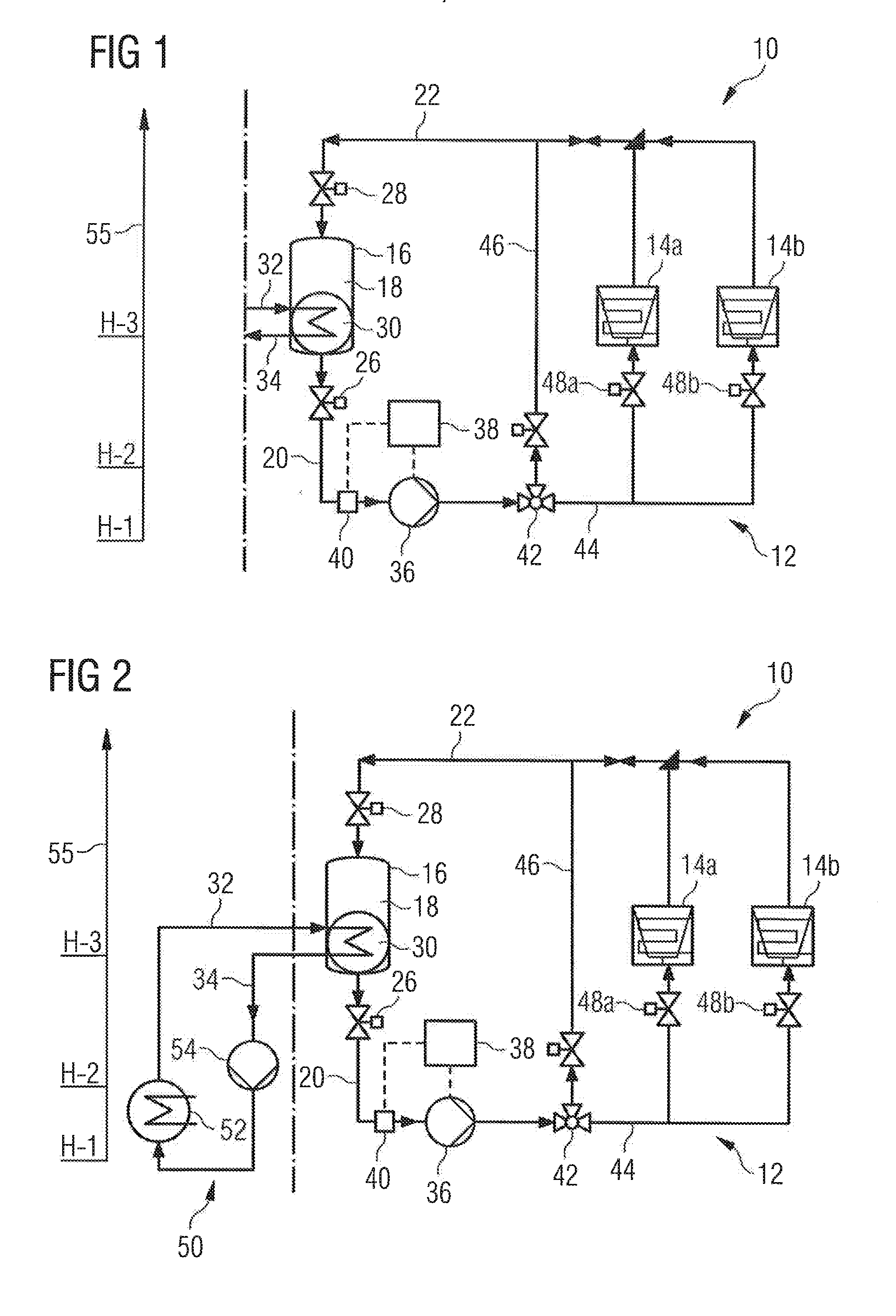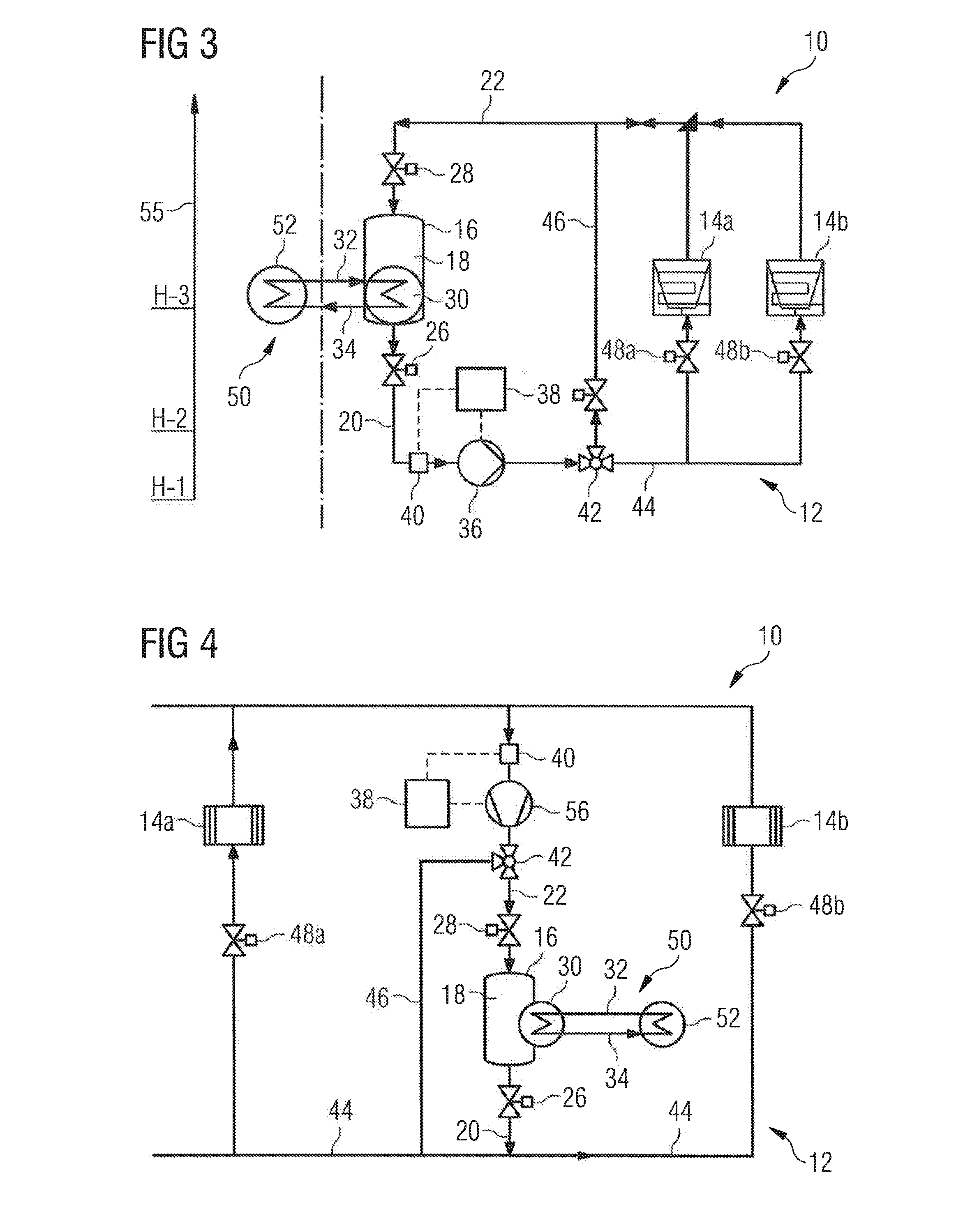Cooling system and method for operating a cooling system
- Summary
- Abstract
- Description
- Claims
- Application Information
AI Technical Summary
Benefits of technology
Problems solved by technology
Method used
Image
Examples
first embodiment
[0045]FIG. 1 shows a cooling system 10 which is suitable in particular for cooling food on board an aircraft. The cooling system 10 comprises a cooling circuit 12 which supplies cooling energy to two cooling stations 14a and 14b. A refrigerant circulates in the cooling circuit 12. Arrows mark the flow direction of the refrigerant in the cooling circuit 12. The refrigerant is converted from the liquid to the gaseous state of aggregation on releasing its cooling energy to the cooling stations 14a, 14b and subsequently converted back to the liquid state of aggregation again by appropriate pressure and temperature control in the cooling circuit 12. The cooling stations 14a, 14b thus have the function of an evaporator and constitute the interface between the cooling circuit 12 and a system to be cooled.
[0046]The cooling system 10 further comprises a refrigerant container 16 which comprises a receiving space 18 arranged in an interior space of the refrigerant container for receiving the r...
second embodiment
[0076]a cooling system 10 illustrated in FIG. 2 differs from the arrangement according to FIG. 1 merely in that the cooling system 10 has a refrigerating device 50. The further refrigerant is in this case formed as liquid refrigerant and the cooling circuit in the refrigerating device 50 is operated without phase change. In this case, the first heat exchanger line 32 is connected to the outlet of a refrigerating machine 52. The second heat exchanger line 34 is connected to the inlet of the refrigerating machine 52.
[0077]The refrigerating device 50 further comprises a pump 54 for conveying the further refrigerant in the direction of the refrigerating machine 52. The cooling circuit in which the further refrigerant circulates may comprise, in addition to the components shown in FIG. 2, also further components, such as control valves, valves or equalising tanks. Preferably, the pipelines of the refrigerating device 50 illustrated in FIG. 2 are of such a short design that it is possible...
third embodiment
[0078]a cooling system 10 illustrated in FIG. 3 differs from the arrangement according to FIG. 1 only in that the cooling system has a refrigerating device 50. The further refrigerant is in this case formed as a two-phase refrigerant, as is the refrigerant. The refrigerating machine 52 of the refrigerating device 50 is directly connected to the heat exchanger 30 via the first and the second heat exchanger line 32, 34. A pump can be dispensed with, thereby enabling a weight and volume reduction.
[0079]Alongside the cooling system 10 in FIGS. 1 to 3 can be seen a qualitative height scale 55, which gives an indication of the height at which the components of the cooling system 10 are located when the cooling system 10 is installed in the aircraft. H-1 represents a low height, H-2 represents a medium height and H-3 represents a great height above a lowest point of the underside of the aircraft. Owing to the height arrangements of the individual components of the cooling system 10 illustr...
PUM
 Login to View More
Login to View More Abstract
Description
Claims
Application Information
 Login to View More
Login to View More - R&D
- Intellectual Property
- Life Sciences
- Materials
- Tech Scout
- Unparalleled Data Quality
- Higher Quality Content
- 60% Fewer Hallucinations
Browse by: Latest US Patents, China's latest patents, Technical Efficacy Thesaurus, Application Domain, Technology Topic, Popular Technical Reports.
© 2025 PatSnap. All rights reserved.Legal|Privacy policy|Modern Slavery Act Transparency Statement|Sitemap|About US| Contact US: help@patsnap.com



